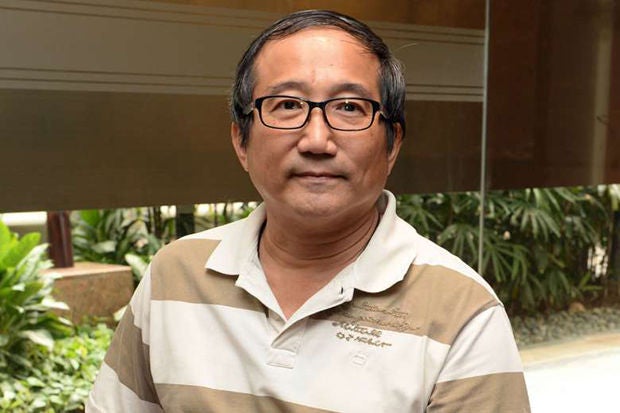
For about a month, Mr Ho Gin Bu suffered a persistent pain in his throat. He also came down with the flu which refused to go away.
Multiple trips to a general practitioner did not help the 55-year-old, who runs a company that puts up poster and billboard advertisements.
Then his blood count fell dangerously low and doctors at Mt Alvernia Hospital found he had a rare form of blood cancer: Stage 4 peripheral T-cell lymphoma (PTCL).
It is a killer as a patient's survival rate is only 30 per cent at three years from the time of diagnosis, even with conventional treatments such as chemotherapy.
The doctors referred Mr Ho to Singapore General Hospital (SGH), where he received chemotherapy and an autologous stem cell transplant, in which his own stem cells were used. But these failed to arrest his cancer.
He was on the verge of giving up when he received an offer to take part in a clinical trial of a novel two-drug combination.
It involved the drugs panobinostat and bortezomib, which were being used for the first time to treat the disease.
That was in 2010.
Today, five years later, Mr Ho's doctors at SGH have declared him free of the PTCL cancer.
His cancer went into remission after two cycles of treatment, which lasted six weeks. After that, he went for four more cycles as part of the standard procedure.
There are many factors that cause PTCL to strike. One of them is when a person produces too much of an enzyme called histone deacetylase.
"When this happens, the cancer cell does not die because the histone deacetylase inhibits the production of proteins that will signal the cell to die," said the trial's lead researcher Daryl Tan, a visiting consultant at SGH's department of haematology.
Panobinostat blocks the production of histone deacetylase.
Bortezomib, on the other hand, blocks the proteasome pathway, which Dr Tan describes as the "garbage bin" which clear the trash - unwanted proteins - in the cell to ensure it continues to live.
"However, if we use something to block it off, like a lid on the garbage bin, then the cell will be saturated with trash that will eventually kill it," he said.
Dr Tan notes that there is an alternate garbage disposal system. But that can be blocked by the drug panobinostat, which is why he thinks the two drugs complement each other.
Each year, almost 700 people in Singapore are diagnosed with lymphomas, the fifth-most-common form of cancer in men, and sixth in women.
One in four of them has PTCL, with only 10 per cent of them living beyond five years.
Mr Ho is among the notable few and the remission has given him time to find a suitable stem-cell donor. He found one: his sister.
"I consider myself very lucky to get this chance to try the two-drug treatment. It stretched my life longer," he said.
He was among 25 patients, a majority with Stage 3 and 4 of the rare cancer, to receive the treatment between 2009 and 2013.
The drugs were effective for 10 patients. The cancer in five, including Mr Ho, is in remission.
Despite the success, it is still an off-label treatment, which means it is prescribed only to a patient who has exhausted all conventional therapies like chemotherapy, said Dr Tan.
But he believes the new success will spur more such treatments. "We have set the stage that this should be the way forward... eventually, the norm is going to be to use combination drugs to target PTCL."
The two drugs are approved by the United States Food and Drug Administration. But they are used to treat other forms of blood cancer, not PTCL.
The next step for the research team is to look for other drugs that could treat PTCL with even better outcomes and fewer side effects, said Associate Professor Goh Yeow Tee, a senior consultant at the haemotology department and senior author of the study.
The team is also developing biomarkers to identify a set of genes which will make a person more likely to respond well to the two-drug treatment.
For now, they hope researchers abroad will build on their findings.
"Our data is out there for everybody to use," said Prof Goh.
Contributed by














 Get it on Google Play
Get it on Google Play